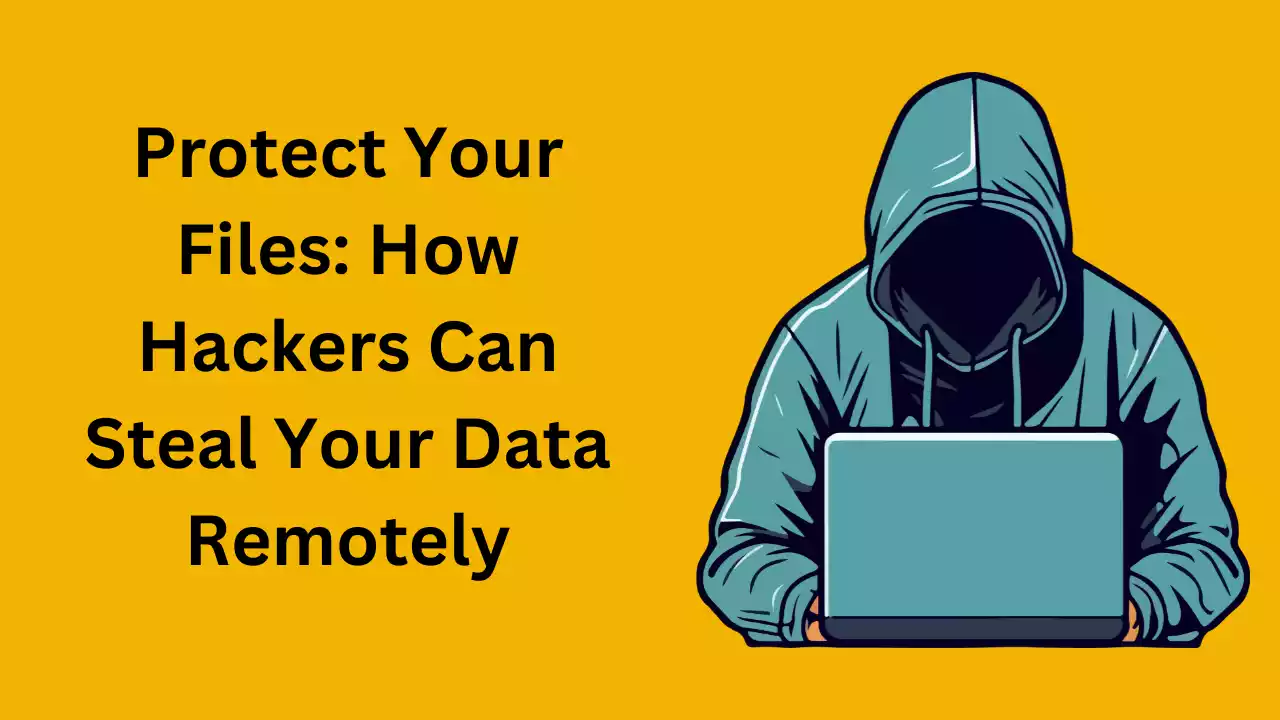In today’s digital age, protecting our files and personal information from cyber threats is more critical than ever. With the increasing sophistication of hackers and cybercriminals, it’s essential to understand the various methods they employ to steal data remotely. From phishing attacks to malware infiltration, the avenues through which hackers can access our files are diverse and constantly evolving. By comprehending these threats and implementing effective security measures, individuals and organizations can mitigate the risk of falling victim to data theft.

Phishing remains one of the most common techniques used by hackers to steal sensitive information remotely. In a phishing attack, perpetrators masquerade as legitimate entities, such as reputable companies or trusted individuals, to deceive users into disclosing their confidential data, such as login credentials or financial information. These phishing attempts often come in the form of deceptive emails, text messages, or fake websites designed to lure unsuspecting victims. Once a user unwittingly provides their information, hackers can exploit it to gain unauthorized access to their files and systems.
Another prevalent method employed by hackers is malware infiltration. Malware, short for malicious software, encompasses a wide range of harmful programs designed to infiltrate and compromise computer systems. Common types of malware include viruses, worms, trojans, and ransomware, each with its own set of destructive capabilities. Hackers distribute malware through various channels, including email attachments, malicious links, infected websites, and removable storage devices. Once installed on a victim’s device, malware can steal sensitive data, monitor user activities, or even render the system inoperable until a ransom is paid.
Remote access tools represent another avenue through which hackers can compromise files and data. These tools, often marketed as legitimate software for remote administration or technical support purposes, can be exploited by cybercriminals to gain unauthorized access to targeted systems. By exploiting vulnerabilities or using stolen credentials, hackers can remotely control a victim’s computer, accessing and exfiltrating sensitive files without their knowledge. Remote access attacks are particularly concerning as they can occur without the user’s awareness, allowing hackers to operate stealthily and evade detection.
In addition to these methods, hackers may also target vulnerabilities in software and operating systems to breach data remotely. Software vulnerabilities, such as unpatched security flaws or misconfigurations, provide entry points for cyber attackers to exploit and gain unauthorized access to systems. Through techniques like code injection, buffer overflow, or SQL injection, hackers can exploit these vulnerabilities to execute arbitrary code, escalate privileges, and compromise data stored on the affected systems. Therefore, regular software updates and security patches are essential for mitigating the risk of remote data breaches.
Fortifying Digital Defenses: Essential Cybersecurity Measures Against Remote Data Theft
To protect against remote data theft, individuals and organizations must implement robust cybersecurity measures. This includes:-
1. Educating Users: Raise awareness among users about common cyber threats, such as phishing and malware, and provide training on how to identify and avoid them.
2. Using Antivirus and Antimalware Software: Install reputable antivirus and antimalware solutions to detect and remove malicious software from your devices.
3. Enabling Firewall Protection: Activate firewalls on your devices and networks to monitor and control incoming and outgoing traffic, blocking unauthorized access attempts.
4. Implementing Strong Authentication: Utilize strong, unique passwords and consider implementing multi-factor authentication to add an extra layer of security to your accounts.
5. Regularly Updating Software: Keep your operating system, applications, and security software up to date with the latest patches and updates to address known vulnerabilities.
6. Monitoring System Activity: Monitor your systems for unusual or suspicious behavior, such as unauthorized access attempts or unusual network activity, and investigate any anomalies promptly.
7. Encrypting Sensitive Data: Use encryption to protect sensitive files and communications, making it harder for hackers to access or intercept your data.
By understanding the tactics employed by hackers to steal data remotely and implementing proactive security measures, individuals and organizations can safeguard their digital assets against cyber threats. Remember, staying vigilant and adopting a proactive approach to cybersecurity is key to protecting your files and personal information in an increasingly connected world.
